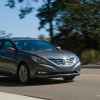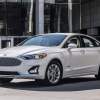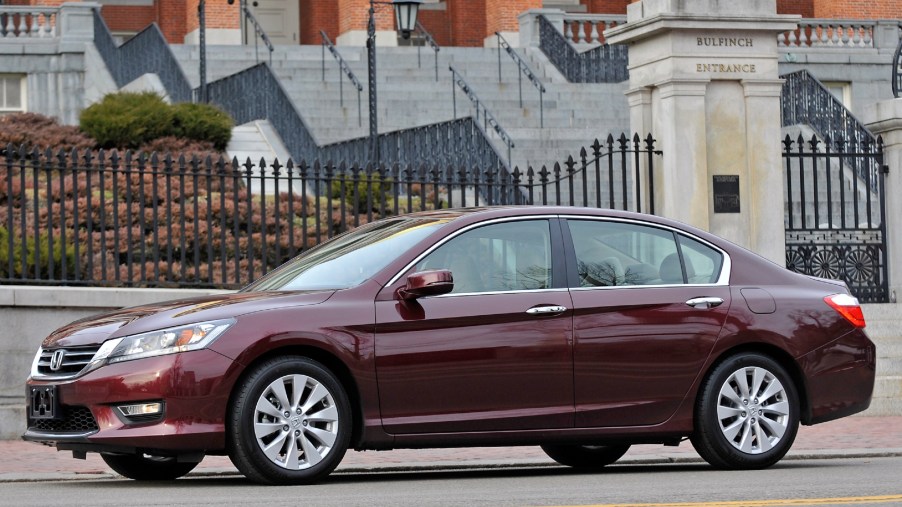
8 Most Common 2013-2017 9th-Gen Honda Accord Problems After 100,000 Miles
Most common high-mileage 2013-2017 9th-gen Honda Accord problems guide highlights:
- The 9th-gen Honda Accord is susceptible to high oil consumption, battery failure, infotainment glitches, and LED headlight problems at high miles
- Honda addressed some of the 2013-2017 Accord’s automatic and CVT transmission issues, as well as some starter motor problems, but proper maintenance is critical
- The 2013-2015 Accord’s steering failure is still under investigation, but the 2016-2017 ones should be fine
It’s almost a cliché how easy it is to recommend the Honda Accord, but it’s like that for several reasons. And not just new ones, either. The Honda Accord is also one of the best affordable used cars you can buy, particularly the recent 9th-gen 2013-2017 model. Not only does the 2013-2017 Accord offer some of the 2022 model’s features, but it’s generally reliable to boot. However, with the earliest 9th-gen models almost a decade old, some flaws are creeping in. So, if you’re looking for a used 9th-gen Honda Accord, these are the problems you should watch out for.
Oil consumption problems continue in the 9th-gen Honda Accord
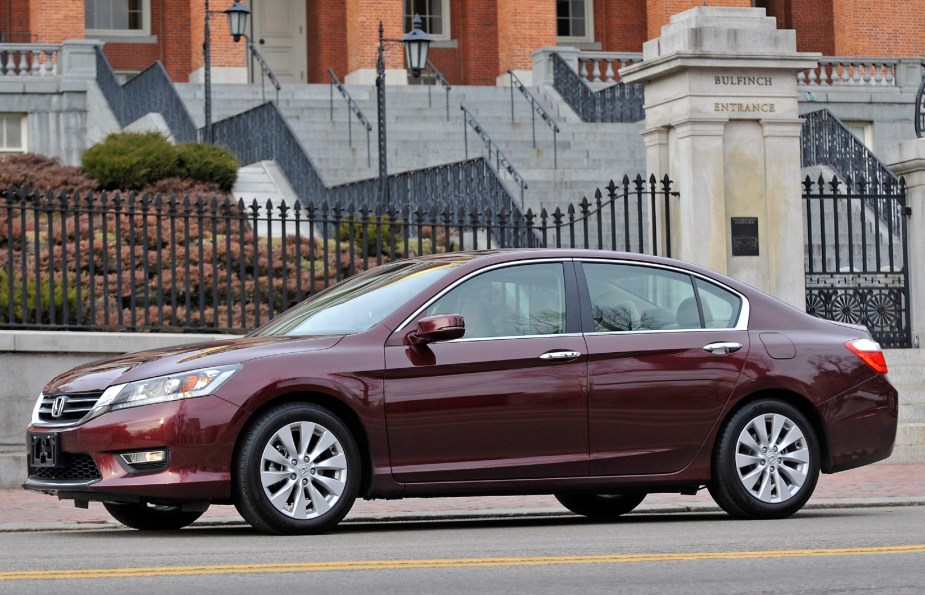
There’s one problem that’s common across multiple Honda Accord generations: oil consumption. And like the 7th– and 8th-gen cars before it, the 9th-gen Accord chews through its oil more frequently as the miles pile on. It can strike both the 2.4-liter four-cylinder and 3.5-liter V6, though CarBuzz claims the issue affects 2013 and 2014 V6s more heavily.
Now, used cars with lots of miles on their clocks often consume a bit of oil as a matter of course. But there are ways of limiting how much oil a 9th-gen Accord drinks.
First, change the PCV valve. Second, some owners claim the original recommended 0W-20 oil grade is a bit too ‘thin,’ and switching to a heavier weight/grade can alleviate some oil consumption. However, check with your mechanic beforehand. Alternatively, though, you could switch to a high-mileage oil, which is specifically formulated to reduce oil consumption.
High-mileage 2013-2017 Honda Accords often have starter motor problems
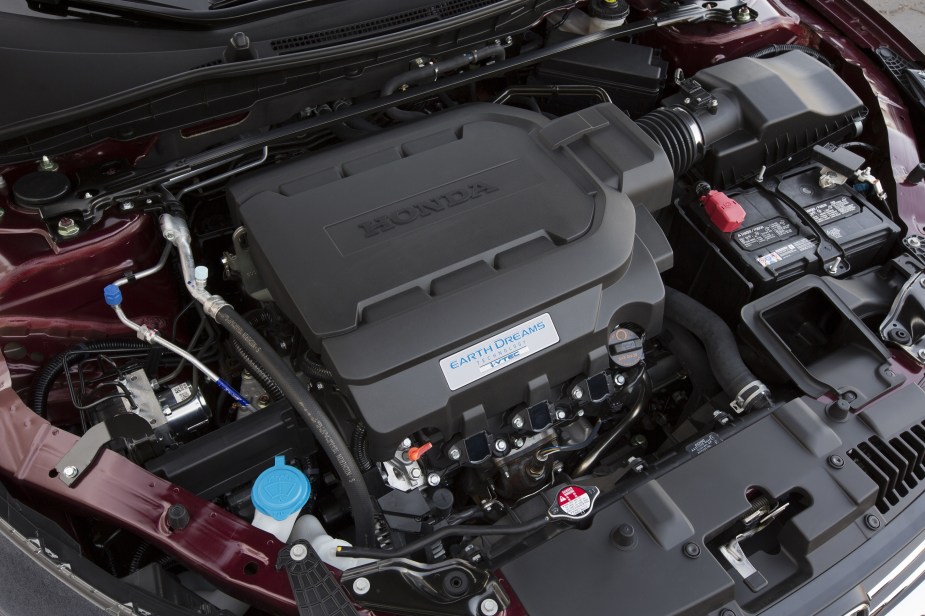
In addition to the oil consumption problems, used 9th-gen Honda Accords are prone to starter motor issues. Some starters fail entirely while others refuse to engage or merely grind heavily during startup. Unfortunately, if the starter really is broken, you’ll have to replace it, which thankfully isn’t too difficult or expensive. However, a grinding starter is a different matter.
Although Honda never recalled the starter, it did issue a technical service bulletin for the grinding problems in 2013-2015 Accords with V6s. According to TSB # 16-002, the original starter wasn’t aligned with the automatic transmission’s torque converter, CB explains. That’s what caused the grinding noise and the starting issues. Honda replaced the starter motor and realigned the crankshaft as part of the TSB, which fixed the issue.
Even if your alternator is fine, your Accord’s battery can still die
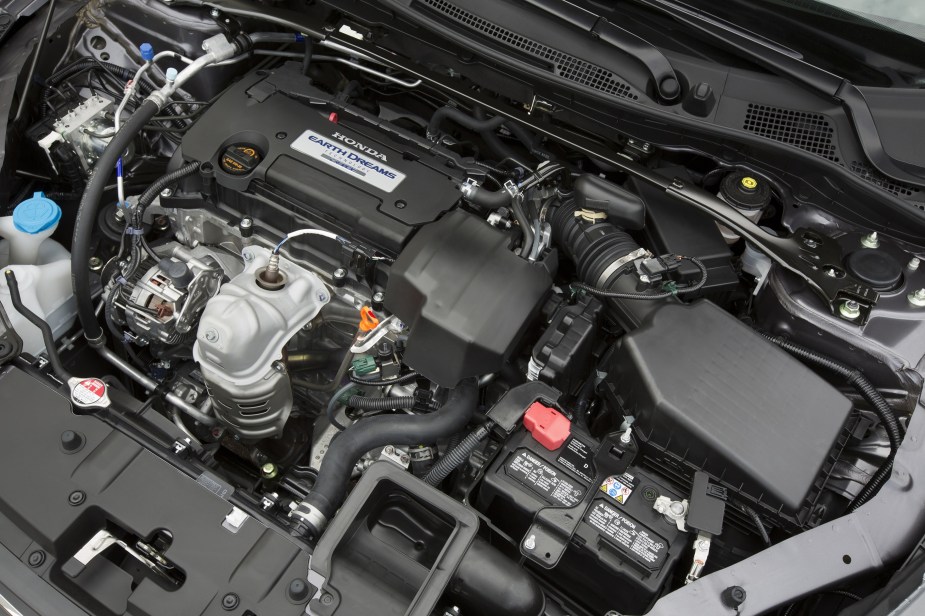
Now, all car batteries eventually need to be replaced. And if you find yourself repeatedly replacing them, you should check your alternator. However, while a handful of 9th-gen Honda Accords had alternator problems, those aren’t common issues, CB reports. Instead, the 2013-2017 Honda Accord’s battery problems stem from other mechanical faults, Samarins explains.
For one, early 9th-gen Accord batteries, particularly those in four-cylinder models, were rather small and weak. So, even a minor drain could cause a host of other issues. In addition, Honda recalled several 9th-gen Accords because of battery sensor defects. Furthermore, it’s not uncommon to see high-mileage 2013-2017 Accords with corroded battery terminals.
The good news is addressing these problems is rather simple. One, get a new, larger-capacity battery. Two, check if your Accord needs battery sensor work. And three, inspect and replace damaged battery terminals.
After 100,000 miles your 9th-gen Honda Accord might need new LED headlights
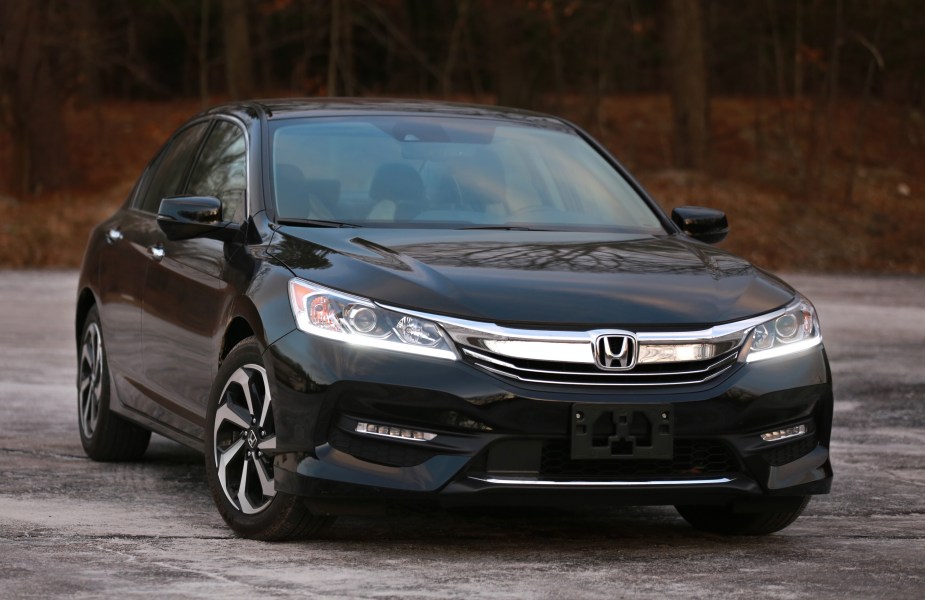
As with batteries, headlights don’t last forever, even LED ones. But the 9th-gen Accord’s LED headlights, specifically the DRLs, often fail earlier than expected. They were failing so often so early that Honda issued a TSB, #19-042, to correct the issue.
This TSB only covers 2016-2017 Accords, as these tend to be the most failure-prone. Any 9th-gen Accord with LED DRLs can potentially experience flickering, dim, and nonfunctional lights, though. However, the issue isn’t the bulbs, but the lenses. According to the TSB, heat from the LED bulbs damages the DRL lens, which makes it look like the bulbs are burned out. And because of the lens design, fixing the problem requires replacing the entire assembly.
On the plus side, Honda extended its headlight warranty on 2016-2017 Accords to 10 years and unlimited miles as part of the TSB. So, if the car you bought has faulty LED DRLs, you can get new ones under warranty. Unfortunately, it doesn’t appear that older 9th-gen models got extended warranty coverage, too. Thankfully, the headlight assemblies aren’t too expensive; a set costs $750, CB reports.
Infotainment glitches can strike 2013-2017 Accords
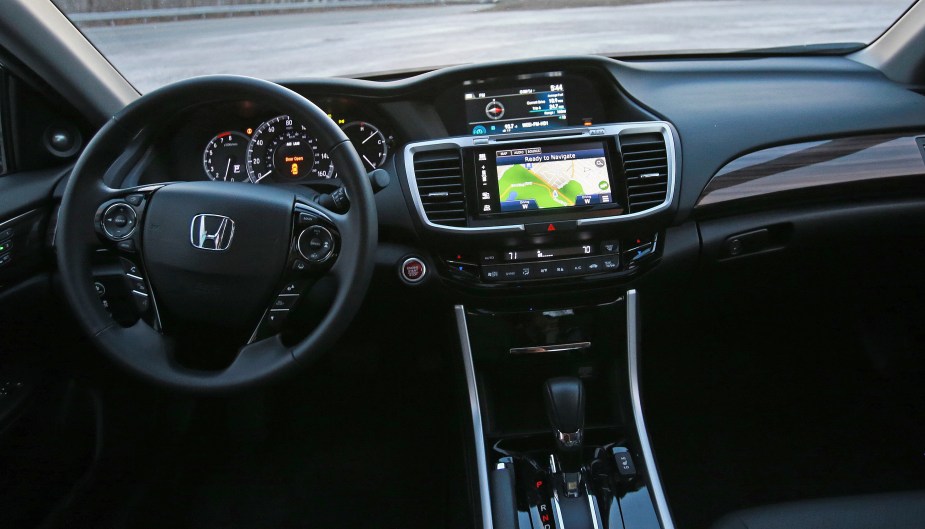
Earlier, I mentioned that 9th-gen Honda Accords have some of the same features the 2022 model has. In later cars, that includes advanced driver-assistance safety features like lane-keeping assist and the Honda Sensing suite. Yet even the early 9th-gen cars offered things like touchscreen navigation, satellite radio, and backup cameras. However, with more gadgets comes more potential problems.
The 2013-2017 Honda Accord has some notable problems with its infotainment features. Owners have reported nonresponsive touchscreens, malfunctioning backup cameras, and radio audio issues. In some cases, even the steering wheel-mounted controls responded sluggishly, CB says.
Unlike the other 9th-gen Honda Accord problems, these infotainment glitches don’t always have easy solutions. In some cases, disconnecting and reconnecting the battery to reset the system works. Also, regularly updating the infotainment software tends to keep these issues to a minimum. But if that doesn’t work, you might need to replace the entire infotainment system and/or backup camera, Simarins notes.
The 2013-2017 Honda Accord’s automatic and CVT transmission can have problems, especially if they’re not maintained well
Although Honda recalled some 9th-gen Accords over rusty driveshafts, that problem has already been addressed. Also, it didn’t strike every 2013-2017 Accord, but mostly 2013-2015 ones. The CVT transmission issues, though, are more widespread.
The 2013 Accord was the first model with a CVT, but only with the 2.4-liter four-cylinder engine. If you got the V6, the non-manual option was a conventional six-speed torque-converter automatic. The latter is pretty robust, though cold temperatures can cause some initial clunkiness upon startup. However, that’s provided you regularly change the transmission fluid and the external filter.
Regardless, the 9th-gen Accord CVT is more problematic. Firstly, there are far more complaints of clunky engagement and rough acceleration with the CVT than with the regular automatic, CB notes. Secondly, some CVTs failed even before reaching the 100,000-mile mark. Though to be fair, some of these failures did stem from improper maintenance.
Honda addressed some of these CVT issues with TSBs, specifically #15-077, as well as software updates. That, along with regular fluid changes according to Honda procedures, tends to smooth out the shifts. But there’s another way to avoid dealing with these problems: buy a manual 9th-gen Accord.
If you’re shopping for 9th-gen Honda Accords, make sure the power steering works
As you can likely tell from this list of problems, the earlier 9th-gen Honda Accords tend to have more flaws. And there’s a big one we haven’t covered yet: the electric power steering.
Last year, the NHTSA opened an investigation after over 100 drivers lost steering control in their 2013-2015 Accords. As of this writing, the investigation is still ongoing, and Honda hasn’t recalled any cars. But CB also notes that 9th-gen Accord steering racks are known to fail even before the odometer hits 100,000 miles.
Fortunately, the investigation doesn’t include the last two 9th-gen Accord model years, which rank high on reliability. So, if you’re worried about potential steering failure, get a 2016 or 2017 Accord.
The 2013-2017 Honda Accord has some problems with its paint
Finally, while it’s not as dramatic as power steering or starter motor failure, high-mileage 9th-gen Accords often have paint problems. Peeling paint, especially the clearcoat, is a common issue. And while rock chips can strike any car, the 2013-2017 Accord seems particularly prone to them, CB reports.
Fortunately, repairing peeling and oxidized paint isn’t too difficult, provided you’re not repairing the whole car. As for chips and scratches, they’re also DIY-able. But if the Accord you’re eying as widespread paint damage, you’ll need to call in a professional.
Follow more updates from MotorBiscuit on our Facebook page.

